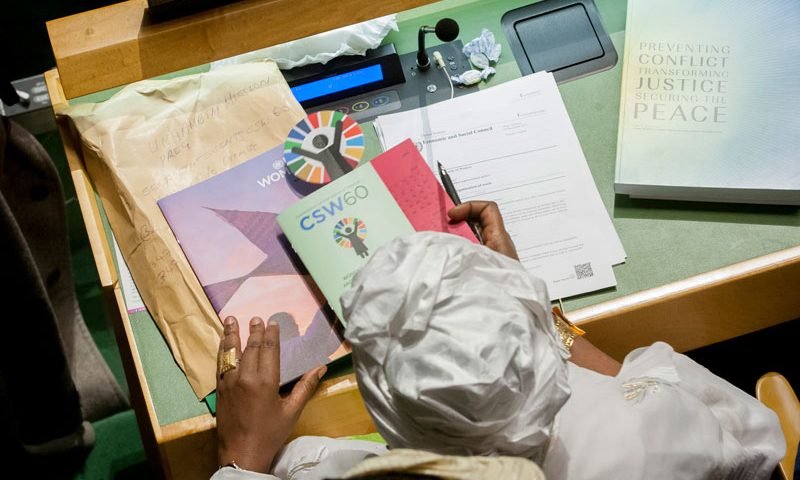It is that story of our struggling national commissions–some of which are forging new ground for U.S. women right now–that I would like to tell.
Fifteen years after the founding of the U.N. and the international Commission on the Status of Women, John F. Kennedy created a President’s Commission to examine issues affecting women in the U.S. Its reports focused on a variety of issues including education, child care, labor standards, employment, equal pay, benefits, community planning, property rights and women in office. It described their status and made a series of recommendations.
Encouraged by the work of this presidential commission other commissions began forming around the country and by 1967 commissions had been established in all 50 states.
This was a milestone. It marked the moment when women’s issues became an important part of the American political dialogue.
In 1975, The National Association of Commissions for Women was
created to serve as “the national voice for women’s commissions throughout the U.S.” At the time, the national commission movement was thriving with as many as 230 commissions at its peak.
Beacon of Progress
My home state of California has 14 members, the greatest number from any state. And some of the work being done through these commissions is making the state a beacon of progress for women. Our San Francisco commission, established in 1975 by a vote of city residents, is one of the most active and well-funded, with a staff of five and a budget of 7 million.
In 1998, San Francisco was the first city to adopt a local ordinance reflecting the principles of CEDAW, or the Convention on the Elimination of All Forms of Discrimination Against Women, and has used it as a tool to conduct gender analysis in city departments, make recommendations and develop new programs. This was the first time that a U.N. human rights treaty was adopted at a local level.
Today, Cecilia Zamora, president of the National Association of Commissions for Women, says 202 commissions exist but many are inactive due to budget cuts, lack of commission appointments and elimination of enabling statutes.
Today her association only has 53 members who pay dues.
One of the primary resources of the national commissions is CEDAW, often referred to as the international women’s bill of rights. The U.N. Women’s Commission spent a decade drafting this document, which was adopted by the U.N. General Assembly in 1979. But it no longer has responsibility for reviewing and monitoring CEDAW as its work was transferred to the Office of the High Commissioner for Human Rights in Geneva on Jan. 1, 2008.
‘Make the Global Local’
CEDAW, meanwhile, has become a major resource for national commissions by providing them with a framework to focus on issues affecting women in a way that can be legally binding.
In 2014, a grassroots Cities for CEDAW campaign was begun as a joint effort by the San Francisco Commission, the New York Committee on the Status of Women and the Women’s Intercultural Network, or WIN. Their goal was to “make the global local” by bringing women’s issues to the forefront in their own communities through municipal ordinances implementing CEDAW.
It is too soon to determine whether the Cities for CEDAW campaign will be a success but to date more than 50 cities and counties are engaged in CEDAW discussions.
Since the U.S. has not adopted the CEDAW treaty, commissions on the status of women could become the instrument to implement CEDAW at the local level instead.
We are seeing this happen now with City Commission of L.A., one of two commissions in the state that are being reinvigorated. This commission has been relaunched by Mayor Eric Garcetti by requiring departments to produce gender analysis reports using CEDAW goals and the California State Commission has received new funding and staff.
There is much unfinished business for women since JFK’s presidential commission published its report in 1963. The time has come to establish a second President’s Commission on the Status of Women; one that would include a partnership with the National Association of Commissions and existing commissions.
The result would not only be a more robust commission movement but an opportunity once again for women to have a permanent voice in the halls of government.

